
Written by digiDirect
Micro Four Thirds cameras are a very popular choice for intermediate and semi-professional photographers alike, and it's easy to see why. They're workhorses that offer a great deal of flexibility with a compact and lightweight design that doesn't sacrifice quality. However, finding the best one does require a bit of research, and we're here to help. Join us at digiDirect as we cover what makes these cameras so unique and desirable and do a short review roundup of our favourite Micro Four Thirds cameras.
Defining a Micro Four Thirds Camera
Micro Four Thirds cameras (sometimes written as Micro 4/3rds, MFT, or M4/3) cover a wide variety of styles and options, but their defining feature is that they all have the same sensor size. This sensor size is a bit smaller than an APS-C sensor, and roughly one quarter the size of a full frame sensor. Learn more about sensor sizing in our Sensor Size Explained article.
Manufactured by Olympus and Panasonic, these cameras made their debut in 2008. Unusually, Olympus and Panasonic decided to share the exact same lens mount, which is uncommon between competing brands even if they have the same sensor size. This means you can use an Olympus lens on a Panasonic body and vice versa. As a result, every Micro Four Thirds owner can pull from the lens lineup of two different companies which opens up entirely new opportunities for lens options.
Another common feature is that Micro Four Thirds cameras are typically much more compact than larger sensor options. The smaller sensor means that the camera body and lenses can be much smaller and this makes them great for the lightweight shooter. Overall, combining the small physical size with a wide range of lens options that spans multiple brands results in a versatile camera system that is excellent for many different photography mediums.
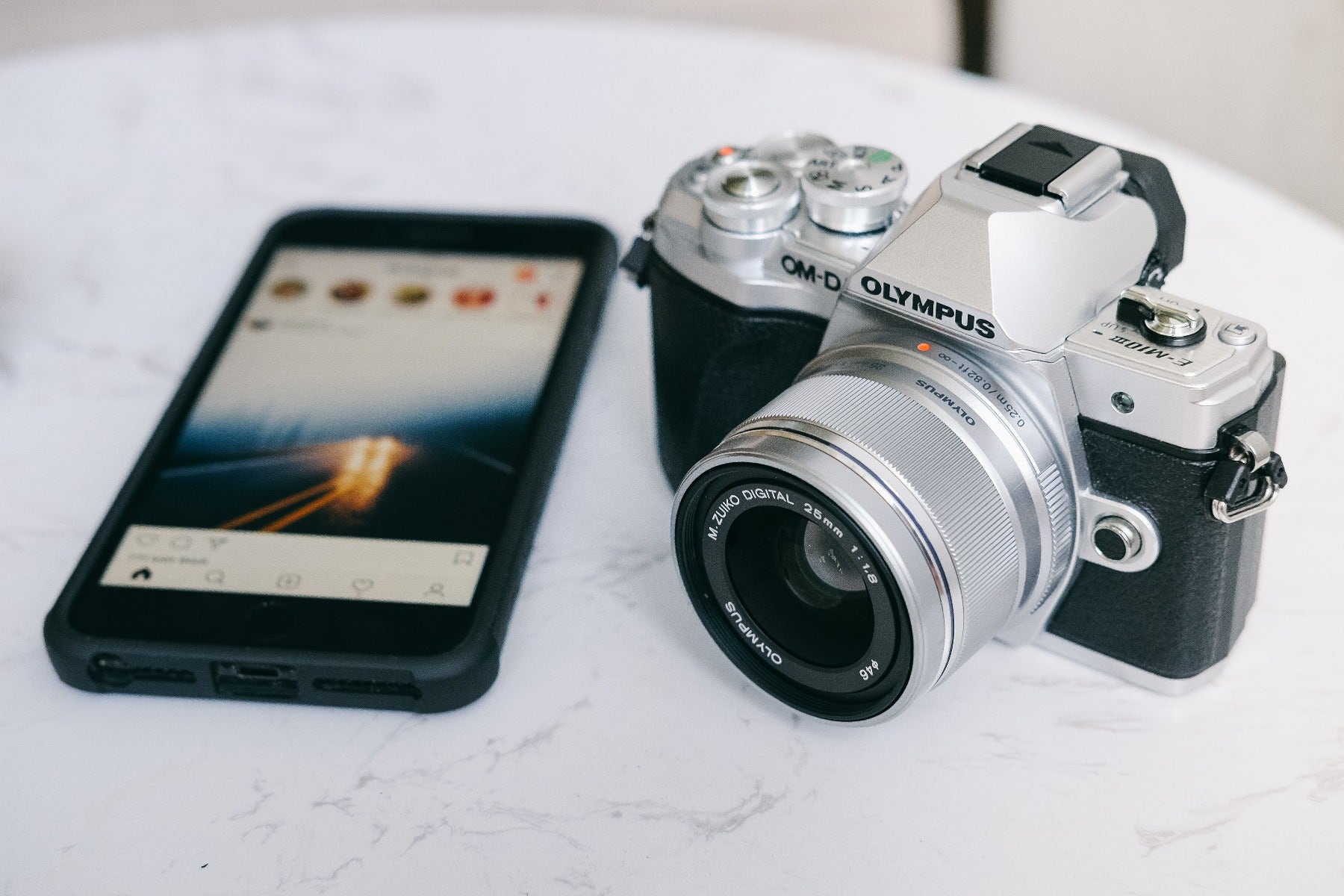
Micro Four Thirds cameras benefit from a compact size, which makes them excel for travel photography and similar
How Sensor Sizing Plays a Role
As we touched on, a Micro Four Thirds camera has a smaller sensor than a full frame camera, and this makes them a more compact option. You get a smaller size that can compete with larger cameras for image quality, and this is extremely important for photographers who don't want to carry a lot of heavy gear around. However, the smaller sensor will have an impact on your low light performance and sensor resolution.
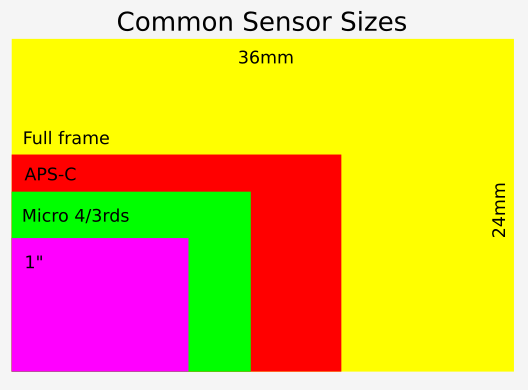
Focal Length Equivalence
Focal length equivalence refers to the angle of view you get when you use a Micro Four Thirds camera compared to the full frame camera. This can be confusing for people to grasp, but it's a relatively straightforward concept. The essential parts to understand are:
Full Frame - A full frame camera is a camera that has a sensor that is physically the same size as the 35mm film used in film cameras. Specifically it is 36mm wide by 24mm high. This sensor size is used as the standard size unit across all camera styles, and lens and camera specs in cameras with different sized sensors are generally compared to their equivalence in full frame terms. As such, full frame sensors are said to have a crop factor of 1.0x.
Micro Four Thirds - A Micro Four Thirds camera has a 4:3 aspect ratio. Physically, the camera sensors are 17.3mm wide by 13mm high. As a result, they has a crop factor of 2.0x relative to a full frame camera.
So, what does this mean for you? Basically, it all comes down to crop factor. Crop factor is the difference in the focal length required to get the same field of view between a full frame camera and a Micro Four Thirds camera.
For example, say you wanted to get the same field of view on your Micro Four Thirds camera as you'd get by using a full frame camera with a 50mm lens. If you just stood in the same place and put a 50mm lens on your Micro Four Thirds camera, that would instead give you the same field of view as a 100mm lens on a full frame camera. This is because you multiply the focal length by the crop factor, so 2 x 50mm = 100mm. Instead, you'd have to use a 25mm lens on your Micro Four Thirds camera, because 2 x 25mm = 50mm. Similarly, if you wanted to get the same focal length using your Micro Four Thirds camera as you'd get when you use a 150mm lens on a full frame camera, you now know that you'd use a 75mm lens.
We can see this in practice by looking at the kit lens focal length for each system. On full frame cameras, a kit lens is typically 24-70mm. On Micro Four Thirds the kit lens is typically 12-35mm. That sounds very different, but when we apply that 2x crop factor, we see that the 12-35mm lens has an exactly equivalent focal length to 24-70mm (because 2 x 12mm = 24mm and 2 x 35mm = 70mm). Basically, if you take whatever lens you want to use on your Micro Four Thirds camera and multiply it by two this tells you what lens on a full frame camera would give you an equivalent field of view. So if you hear people talking about how great their 85mm full frame lens is for portraits, you know you'll want about a 42mm lens for equivalent performance on your Micro Four Thirds system.
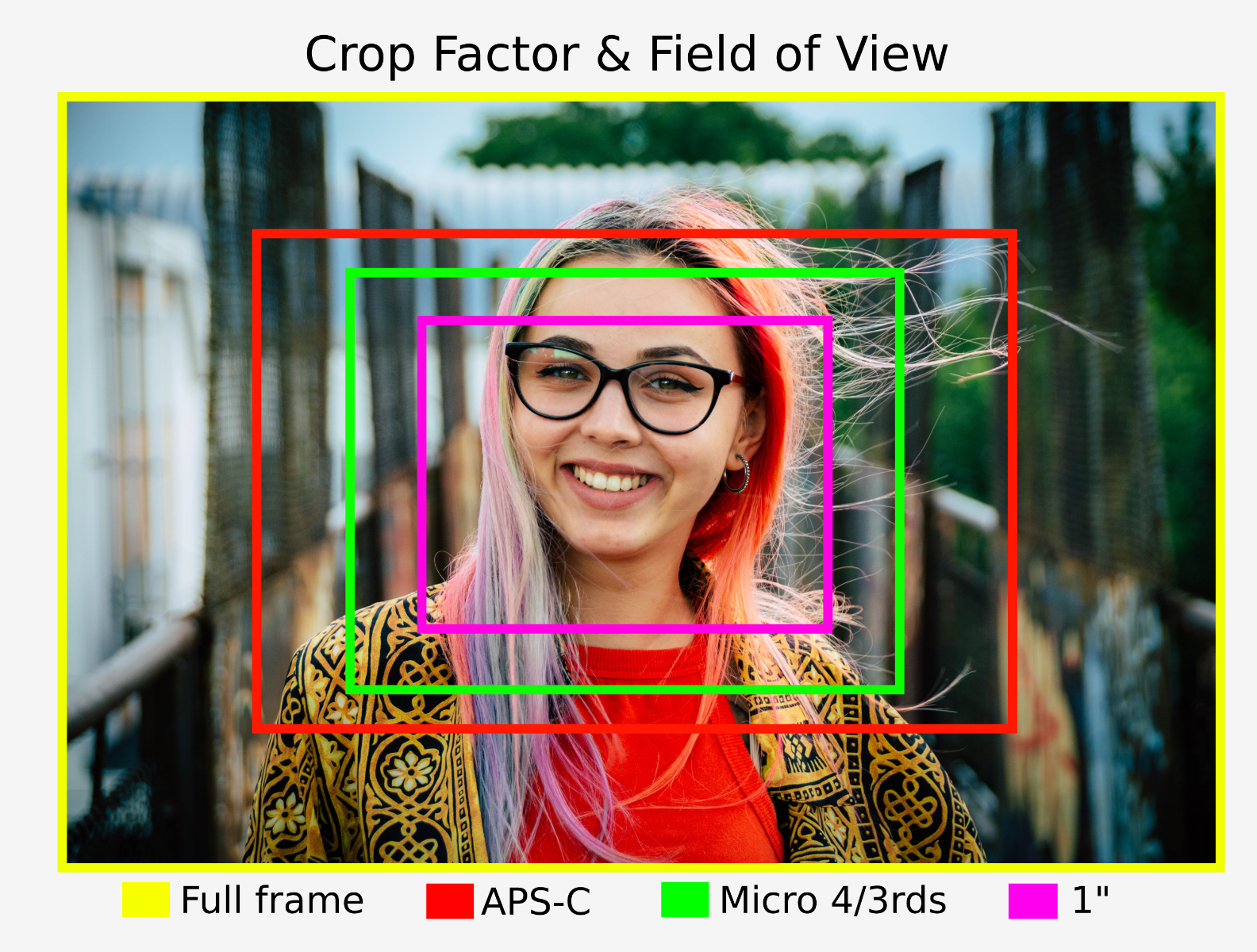
Micro Four Thirds cameras have a 2x crop factor compared to full frame
Low Light Performance
Even though Micro Four Thirds cameras have come a long way with low light performance in recent years, they don't perform as well as full frame cameras in dark environments. Full frame sensors will almost always perform better at high ISOs, producing less noise than a Micro Four Thirds sensor. This is because the sensor simply isn't large enough to compensate for the reduced light. However, the gap is closing, and with a fast aperture lens you can still achieve great quality images in low light with a Micro Four Thirds camera.
Resolution
Finally, since the sensors in Micro Four Thirds cameras are physically smaller than full frame, they tend to have less resolution. Full frame sensors these days range between about 25 - 60 MP, while at the moment the highest resolution Micro Four Thirds sensor is 20 MP. This isn't as bad as it seems though. Despite what the marketing material of some full frame camera manufacturers may have you believe, 20 MP is still more than enough for most uses. Learn more about sensor resolution in our article How Many Megapixels is Enough?
Despite lower resolutions and low light performance compared to full frame, Micro Four Thirds cameras still produce exceptional image quality, and their sizing and pricing differences compared to full frame makes them an excellent value proposition for the discerning photographer. They're a great option for people who want the flexibility of a full frame camera but aren't willing to pay top dollar or deal with very large cameras and lenses.
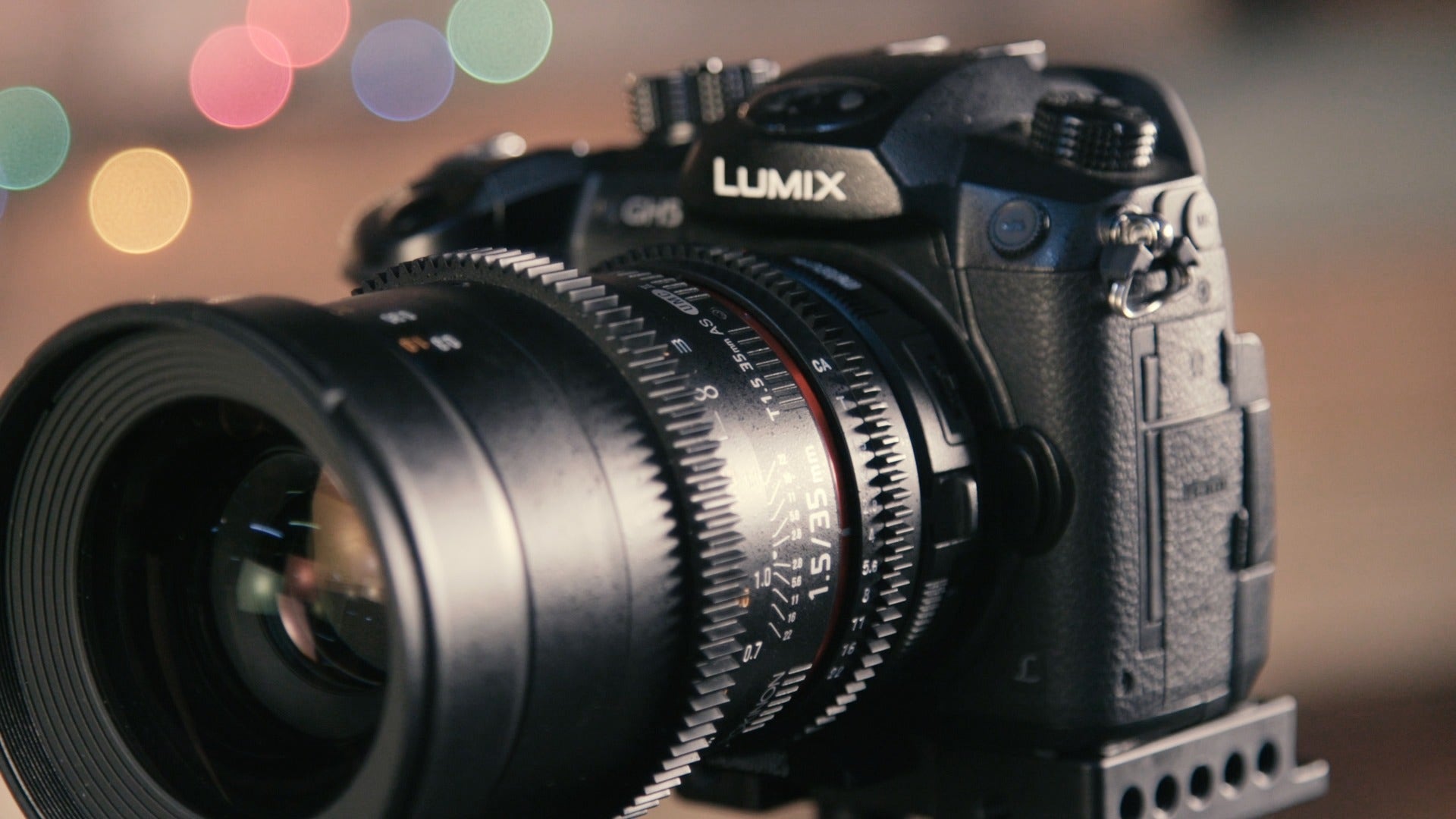
Micro Four Thirds cameras are continuing to increase in popularity
Reviewing Top Micro Four Thirds Cameras
Due to the range of options is can be overwhelming to find the right Micro Four Thirds camera to suit your needs, especially if you're new to this type of camera. We've done the research for you and rounded up eight of the best Micro Four Thirds cameras available, and we have mini-reviews below.
Extremely popular with travellers and people new to the Micro Four Thirds world, the Olympus E-M10 IV allows you to get excellent picture quality at a fraction of the price you'd spend on the full frame counterparts. It's a very cost-effective option that delivers crisp and clear photographs, and the lightweight design makes it easy to slip into your bag. It has an abundance of manual control options that allow you to experiment with your settings and learn how they correlate to one another, and it's an excellent starter camera with considerable room for growth.
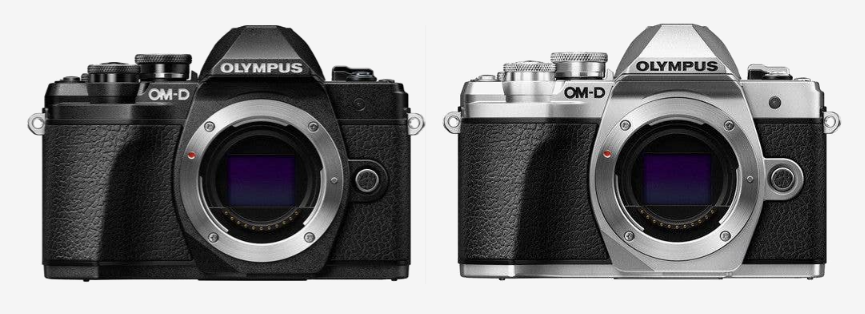
This compact and stylish camera features a rangefinder body design that is sleek and durable. A strong option for wildlife or landscape photographers, the tilting viewfinder allows you to shoot at different angles. It features a very simple and user-friendly design, and it works well for intermediate photographers who want a camera with a little more flexibility and range.
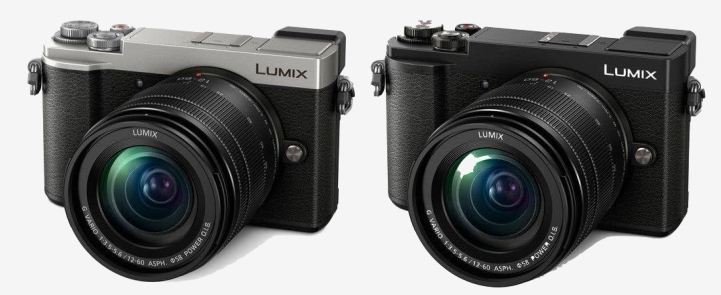
The E-M1 III from Olympus is a fully weather-sealed camera that is excellent for outdoor and sports photographers. It has a durability that ensures it'll survive rugged terrain and unfavourable weather conditions. It's a very high-performing camera in a very compact and lightweight size, featuring impressive autofocus performance and burst shooting features. If you don't need the ridiculous performance that you'd get with the more expensive E-M1X, this camera is a viable option because you still get crisp and sharp images wrapped in a rugged design.
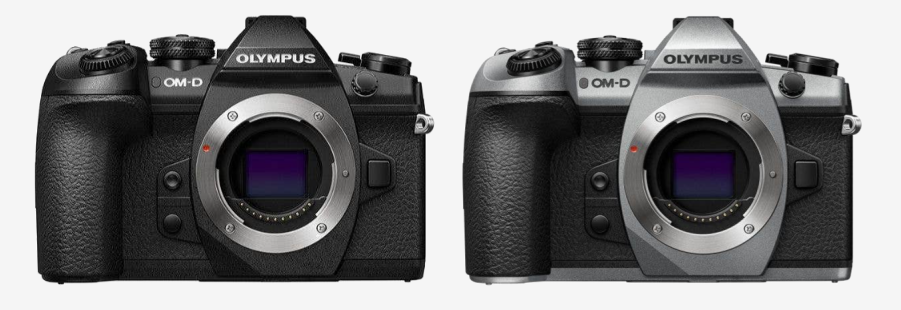
The GH5 is Panasonic's high-end video shooter that works for those adventurers that want to capture every moment in clear and bold video format. It's widely considered to be one of the best video shooters on the market, and it gives you 6K photos, 4K video at 60 fps and 10-bit 4:2:2 internal recording capabilities. All of this means that you'll get clear video in a high resolution, no matter where you're shooting.
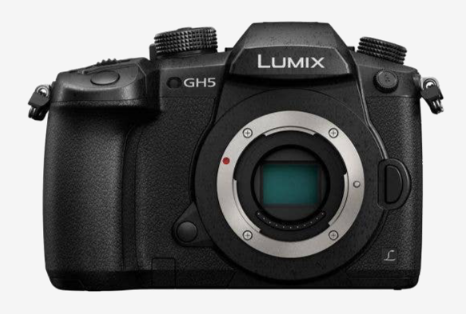
This is Panasonic's high-end photo shooter that features good video shooting capabilities as well. You get exceptional image quality when you shoot with this camera, and it features fast burst shooting capabilities that make it popular with wildlife and sporting event photographers. The in-body stabilisation system ensures that you'll get crisp and clean images, whether you shoot photo or videos.
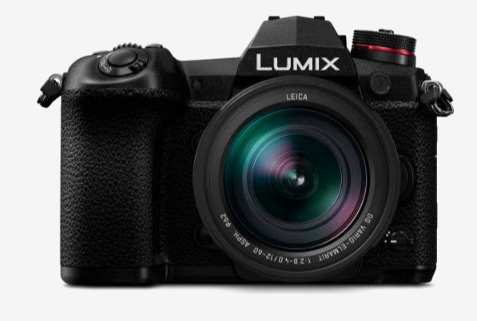
Perfect for professional photographers who have demanding shooting needs, the E-M1X from Olympus is a very high-end camera. It offers top-of-the-line performance in a variety of shooting environments and conditions, and it boasts amazing autofocus capabilities. You get dual image processors coupled with a built-in image stabilisation system that ensures you get fast performance and exceptional quality shots. Although this camera is more expensive and larger than many Micro 4/3rd cameras, it's easily able to compete with the Canon 1Dx II and the Nikon D5 systems that are double the size and price of this system.
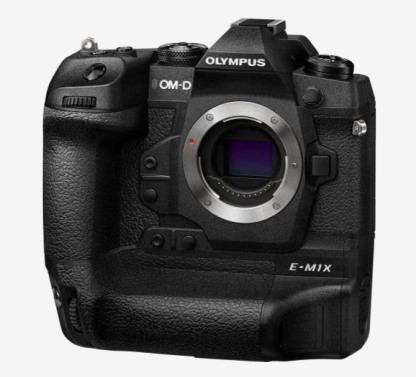
Contact digiDirect Today!
Curious about our selection of quality Micro Four Thirds cameras? Maybe you have questions or concerns, or you'd like our staff to help you find the best camera to suit your needs and budget. Whatever the reason, we want to hear from you. Contact us today! Our staff are standing by and ready to assist you in any way they can.
{{widget type="Magento\CatalogWidget\Block\Product\ProductsList" title="Products Featured in this Article" show_pager="0" products_count="20" template="Magento_CatalogWidget::product/widget/content/grid.phtml" conditions_encoded="^[`1`:^[`type`:`Magento||CatalogWidget||Model||Rule||Condition||Combine`,`aggregator`:`all`,`value`:`1`,`new_child`:``^],`1--1`:^[`type`:`Magento||CatalogWidget||Model||Rule||Condition||Product`,`attribute`:`sku`,`operator`:`()`,`value`:`134584,132231,132229,130544,125326,127942,120101`^]^]" type_name="Catalog Products List"}}



















































































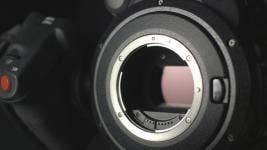


Comments
No Comments yet. Be the first to comment.